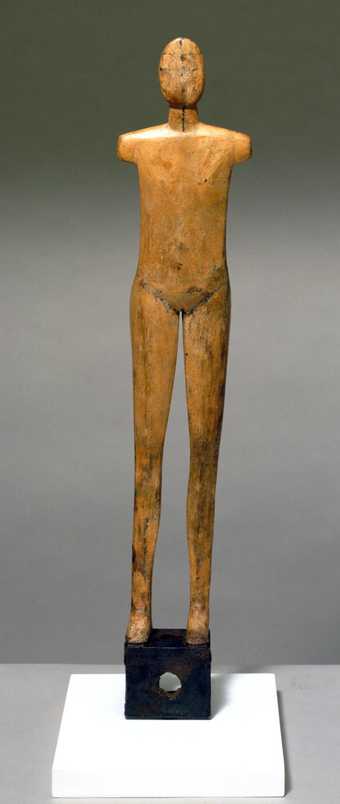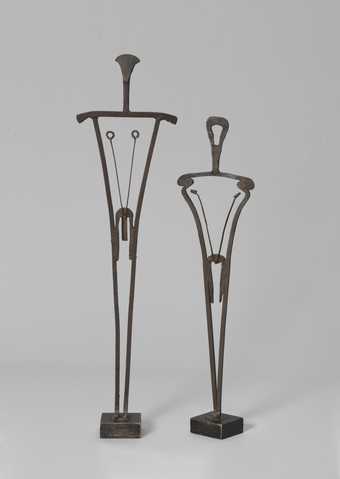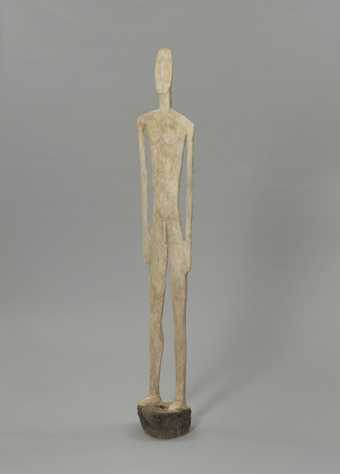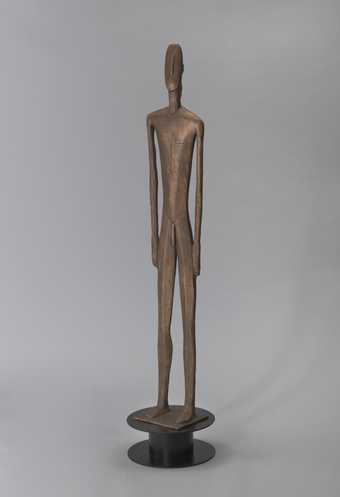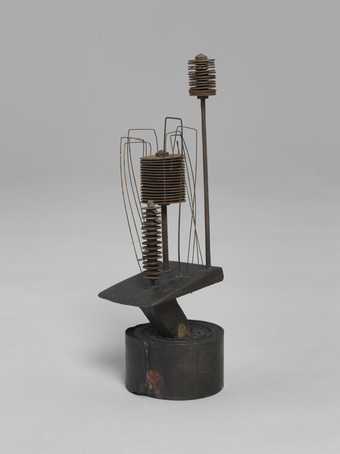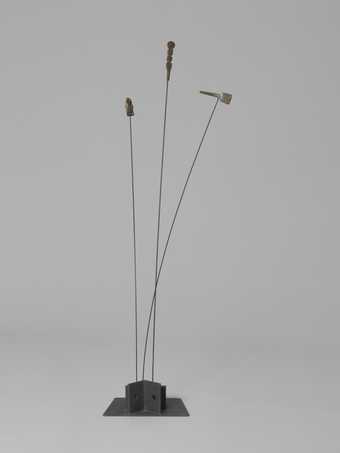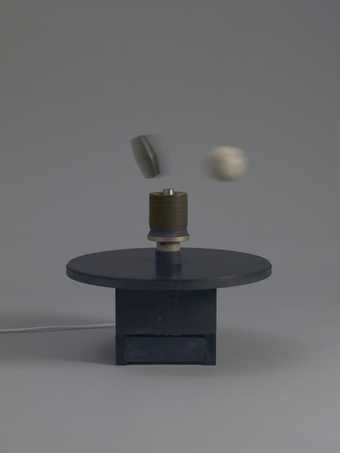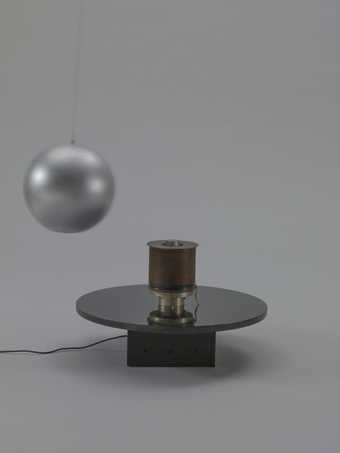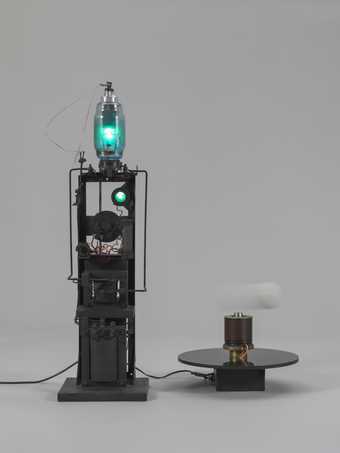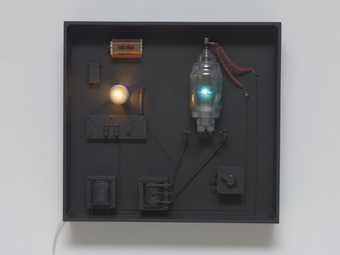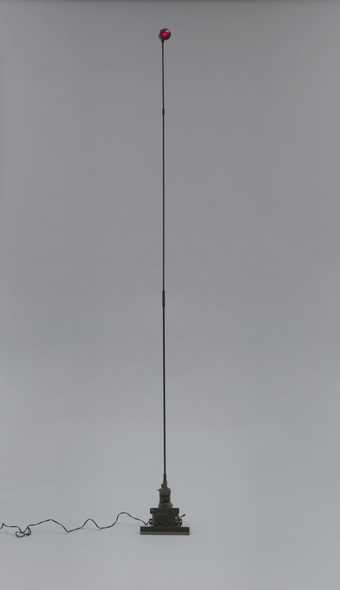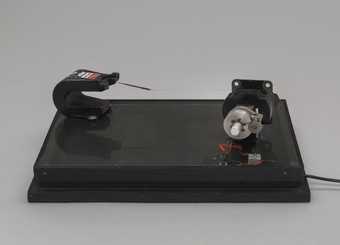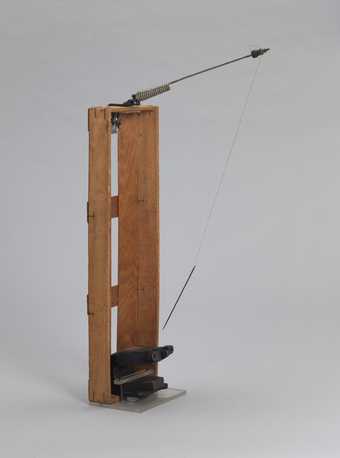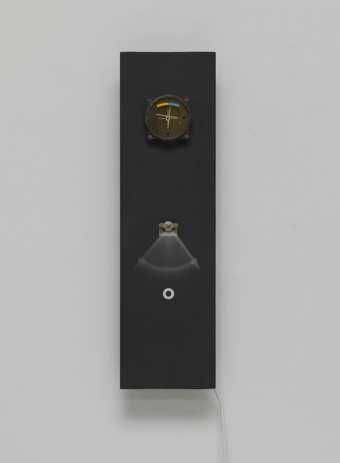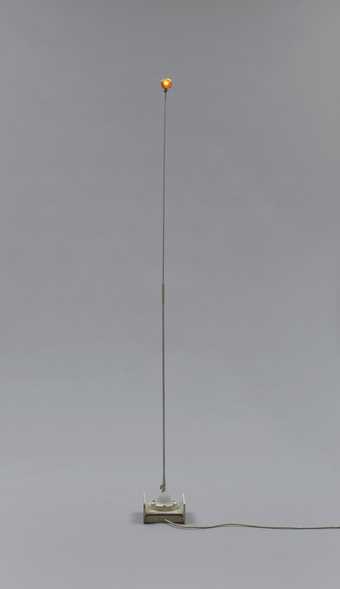Not on display
- Artist
- Takis 1925 – 2019
- Original title
- Signal 'insecte-animal de l'espace'
- Medium
- Iron, steel and bronze
- Dimensions
- Object: 2080 × 282 × 380 mm
- Collection
- Tate
- Acquisition
- Presented by Mrs Peggy Guggenheim through the Contemporary Art Society 1965
- Reference
- T00731
Display caption
Taking the form of electrical antennae, Takis's Signals sculptures could be imagined to be receiving and transmitting messages of far-off, cosmic events. Takis was interested
in making the viewer recognise the power of the invisible forces that animate the world. Embracing technology, he used industrial debris and scientific technologies in his work, which he invested with an existential meaning. Signals gallery in London was named after this series of works.
Gallery label, July 2007
Does this text contain inaccurate information or language that you feel we should improve or change? We would like to hear from you.
Catalogue entry
T00731 Signal 'Insecte-Animal de l'Espace' (Signal 'Insect-Animal of Space') 1956
Not inscribed
Iron, steel and bronze, 81 7/8 x 9 x 9 1/2 (208 x 23 x 24); the width and depth exclude the projecting metal base
Presented by Mrs Peggy Guggenheim through the CAS 1965
Prov: Mrs Peggy Guggenheim, Venice (purchased from the artist)
Exh: The Peggy Guggenheim Collection, Tate Gallery, December 1964-February 1965 (174) as 'Signal' 1958
Lit: Takis, Estafilades (Paris 1961), pp.132-4, 147-8, 150-4
Repr: Michael Compton, Optical and Kinetic Art (London 1967), pl.29
The artist wrote that this was made in 1956 and he would like it to be entitled 'Signal "Insecte-Animal de l'Espace"' (letter of 1 October 1965).
He relates in his autobiography Estafilades that the idea of making his series of metal sculptures known as 'Signals' first came to him in 1955 on his way back to Paris after the end of his exhibition at the Hanover Gallery (which closed on 4 March). On arrival in France he had to wait for four hours at the railway station, where he was greatly excited by the spectacle of a forest of signals. 'Before long, my Signals were transformed from railway signals into rockets, antennae and radio receivers. Travelling often by aeroplane, I was always delighted by the aerodromes and their giant radars which turned slowly, seeking out the metallic objects which glide in space. It is as though they were monstrous instruments intercepting cosmic events' (op. cit., p.150).
This interest in cosmic forces led directly to his experiments with different manifestations of magnetic energy.
Published in:
Ronald Alley, Catalogue of the Tate Gallery's Collection of Modern Art other than Works by British Artists, Tate Gallery and Sotheby Parke-Bernet, London 1981, p.712, reproduced p.712
You might like
-
Takis Young Girl
1956 -
Takis Oedipus and Antigone
1953 -
Takis Plaster Figure
1954–5 -
Takis Bronze Figure
1954–5, cast 2009 -
Takis Electronic Flower
1957 -
Takis Signal
1957 -
Takis Magnetic Ballet
1961 -
Takis Magnetic Ballet
1963 -
Takis Télélumière No. 4
1963–4 -
Takis Télélumière Relief No. 5
1963–5 -
Takis Signal
1964–5 -
Takis Oscillating Parallel Line
1965 -
Takis Defying Gravity
1965 -
Takis Yellow Electron
1966 -
Takis Signal
1965


